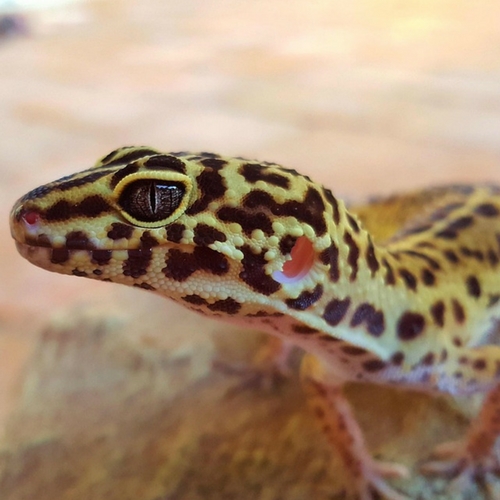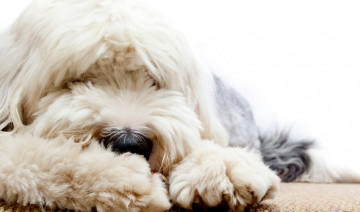10 Symptoms of Diabetes in Dogs
Diabetes can be a challenging condition to manage, especially in pets that cannot verbally communicate how they feel. Recognizing the symptoms of diabetes in...

• Captive Environment: Leopard Geckos can be housed in a 20 gallon tank (more than two should be housed in larger aquariums).
Newspaper, gravel or orchard bark are all good substrates for these geckos. Sand can be used, but ingestion and
impaction is common enough that a close watch should be kept on animals bedded on this substrate. Cage
decoration can be as simple or elaborate as you like. These geckos appreciate hiding places, so half-logs, PVC
tubes and hide boxes will be utilized a lot. Branches and rock piles to climb on will add stimulation.
• Cleaning: Cages must be kept clean to prevent disease. Anti-bacterial cleaning solutions are recommended. One
ounce of bleach in ten ounces of water is one such solution. Rinse the cage with clean water after using any
solution. Don't use Lysol, Lestoil or other such oil based cleaners; they are deadly to reptiles.
• Temperature: Leopard Geckos are native to Pakistan and prefer a warm, dry environment. A median air day temperature of 85F should be maintained, with a basking area slightly warmer. Nighttime temperatures can drop
to the mid- to high-70's Farenheit. Thermometers and thermostats are necessary to maintain the proper
temperatures in a gecko enclosure. Too cool is not good, but too hot is even worse. A full-spectrum/UVB light is
not needed for these primarily nocturnal lizards. Never leave the cage in direct sunlight!
• Water Requirements: Keep a bowl or bowls of clean water in the cage at all times. Larger bowls can be half-buried in the sand. If the geckos are small enough to get stuck in a bowl, add some rocks or cotton. Leopard Geckos like an occasional misting, but do not let the enclosure get damp/humid.
• Nutritional Requirements: A variety of insects can be offered to the geckos - appropriately sized cultured crickets, mealworms, and
wax worms can be fed. Dusting food with calcium powder once a week or a couple times a month is a good idea.
Insects should be gut-fed 24 hours before being fed to your lizard. You can buy commercial gut-load at most pet
stores. Leopard Geckos will occasionally lick calcium powder directly out of a shallow dish or bowl, so it wouldn't
hurt to offer it. Use a phosphorus-free supplement like Rep-CalTM.
An occasional treat of baby food (carrot, fruit, garden vegetables) can break up the food monotony.
If your Leopard Geckos are fed a diet primarily of crickets they may experience selenium toxicity. Giving very
small amounts of Vitamin E oil once a week by popping a capsule and putting drops on the lizard's mouth so it can
lick them off may help. Check with a qualified herp veterinarian with any questions about this.
• Handling: Leopard Geckos, although primarily nocturnal, tolerate human interaction fairly well. Most are content to sit on their keeper's hands and take in the view. Younger animals may need gentle handling over time to tame down.
Leopard Geckos rarely bite.
• To print Leopard Geckos care information, click here.
We are constantly adding new specials to our site. Be sure to check back often!
We currently do not have any events scheduled.

Diabetes can be a challenging condition to manage, especially in pets that cannot verbally communicate how they feel. Recognizing the symptoms of diabetes in...